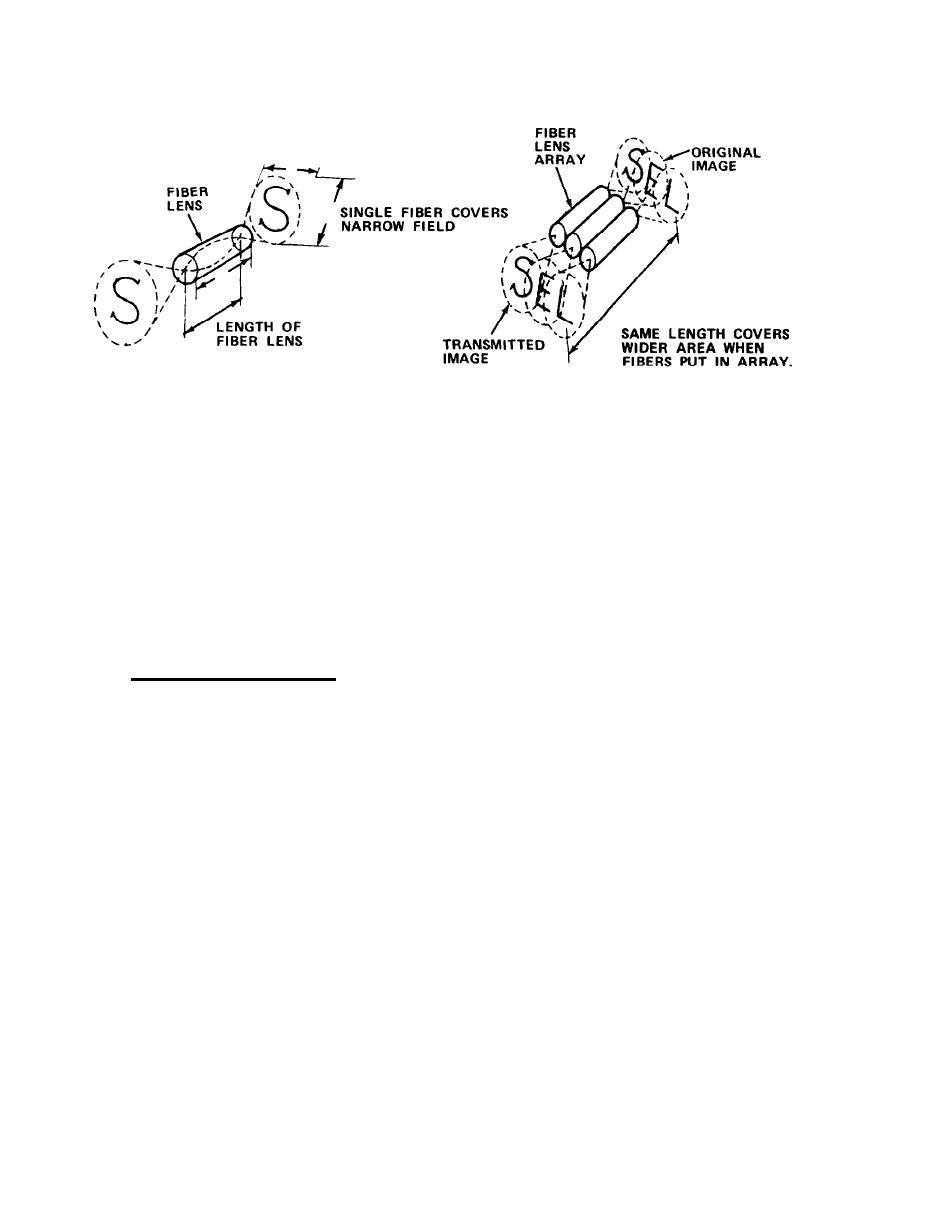
TM 5-6675-324-14
(2) Lens system. The copier uses a fiber optic lens array to focus a 1:1
(full size) image on the drum during the scanning stage. Fiber lenses are used
because of the small distances between lens and subject, whereas conventional lenses
require large distances. A fiber optic lens can be made so that it focuses an image
in a very short distance; its focal length is a function of its length only.
However, the field covered by a single fiber lens is small. To increase the cover-
age to the width of the page, many fiber lens rods are arranged side by side in an
array so that their fields overlap. The fibers in the array are 0.4 in. (1 mm) in
diameter and are arranged in two staggered rows with a total width of 11.811 in.
(300 mm) . The major benefits of using fiber optic lens arrays over spherical lenses
are: The image can be focused in a very short distance, and light distribution and
resolution are uniform across the width of the fiber.
3-3.3 Sequence of Operation.
Image Formation.
The process consists of eight steps:
a.
Preconditioning Exposure Corona (1)
Primary Corona (2)
Secondary Corona Image Scanning Exposure (3)
Overall Exposure (4)
Development (5)
Image Transfer (6)
Fixing (7)
Drum Cleaning (8)
3-32

